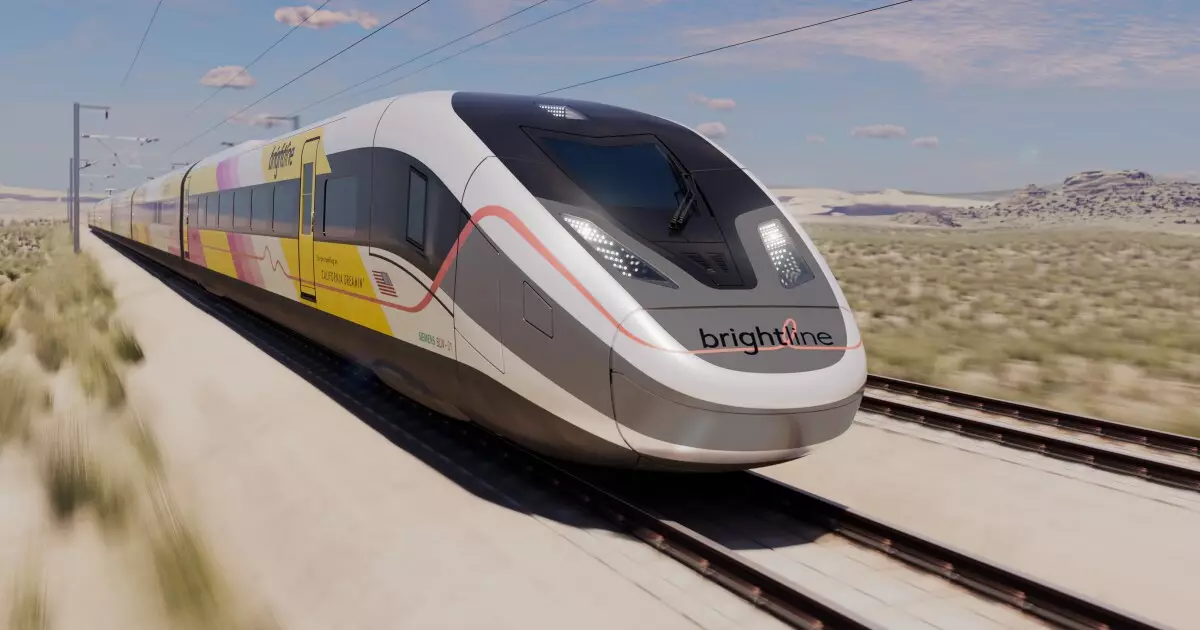Brightline West’s entry into the financial markets represents a significant moment for the future of high-speed rail in the United States. With the announcement of $2.5 billion in unrated private activity bonds, this ambitious project aims to connect Los Angeles and Las Vegas with a cutting-edge, all-electric train system. This write-up delves into the intricacies of the bond issuance, the economic implications, and the potential challenges facing the project as it strives to meet the evolving landscape of transit needs in a rapidly shifting financial environment.
The announcement of Brightline West’s bond deal featured an uncommon structure: a single $2 billion CUSIP—a move that enhances liquidity. This unique approach has attracted considerable interest, with over $3.4 billion in orders. Such a response demonstrates strong market confidence and eagerness among 75 participating accounts. The excitement originates from the substantial nearly double-digit yields offered by the bonds, each boasting a generous 9.5% coupon. This essentially places these offerings in the spotlight amid a high-yield municipal bond year.
Jim Lyman of Belle Haven Investments, involved in the deal, emphasized that investors are not just purchasing bonds, but gaining an attractive suite of features, including liquidity and solid government backing. The comparative evaluation of Brightline West against other high-yield opportunities further underscores its appeal. Many investors are drawn by the perceived stability and the opportunity to fund a transformative transportation initiative—thus potentially racing ahead of other financial offerings fraught with risk.
Brightline West’s structure has been interpreted as a tactical choice, reflecting broader market dynamics. Given the ongoing challenges in other rail projects, particularly the California High-Speed Rail Authority, this project’s proactive stance and solid financial underpinnings appear strategic. The optimism surrounding Brightline West’s funding strategies has been buoyed further by positive signals from federal funding considerations and the Biden administration’s support.
Nonetheless, the more traditional investors, such as GW&K Investment Management, demonstrate the counter-narrative, highlighting an inherent wariness around the reliability of projected ridership and economic outcomes. While Brightline West has garnered likeminded investors, skepticism persists regarding its ability to deliver on financial and operational projections in the face of critical concerns over market reception.
One of the looming challenges for Brightline West is securing additional funding. The $2.5 billion in bonds marks only the beginning of a much larger $12.4 billion financing effort. The next significant step is securing a $6 billion bank facility rated senior to the PABs. The pressure is on the Brightline team to furnish this funding within 180 days, with implications tied to the mandatory bond redemption clause that accompanies failure to secure funds.
As anticipated, the construction timeline is under scrutiny, with completion now projected for December 2028. The fact that this timing strays from the original target aligning with the Los Angeles Olympics raises eyebrows and further underscores the ongoing complexities in the project’s ballet of finance and logistics.
Compounding Brightline West’s funding strategy is the tenuous political landscape affecting federal grants. Recently, the Trump administration praised the project while questioning the efficiencies of the California High-Speed Rail initiative. Brightline West had earlier secured a substantial $3 billion federal grant, but uncertainties loom as some investors worry about federal backing for current transport projects amid changing administrations.
The updated bond documents acknowledge the uncertainties surrounding future grant availability, which poses an inherent risk. These elements add a layer of complexity amidst broader discussions of federal transportation financing, fortifying the charge against any potential funding deficits. Additionally, the nuances of political transitions significantly influence market perceptions and investor decisions.
Brightline West stands at a crossroad of opportunity and challenge. The ambitious plan for high-speed rail between Las Vegas and Los Angeles serves as a litmus test for future infrastructure investments in the U.S. How effectively the project can navigate its financial pathway while addressing political, economic, and operational concerns will ultimately define its success. As investors keep a close watch, the real question remains: can Brightline West leverage its initial bond success into sustainable long-term funding and confidence from an influential community of stakeholders?

